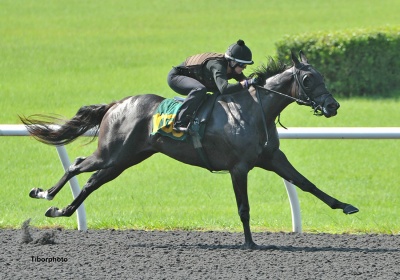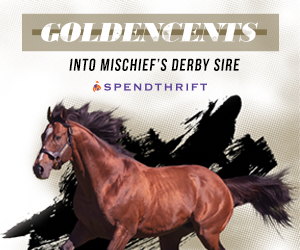
By: Steve Zorn
With the Ocala Breeders Sales Co.’s July sale in the books, the mightily challenged 2020 two-year-old thoroughbred sales season is finally over, much, I suspect, to the relief of the dozens of pinhookers and sale consignors who weathered this year’s chaos. Whatever spin OBS and Fasig-Tipton, the only major players in the juvenile auction market, put on this year’s results, really the best one can say about them is, it could have been worse.
First, to recap the just-concluded OBS July sale. This was the third of OBS’s annual juvenile auctions, and it’s the one that usually draws horses with either lesser talent or later birthdays, meaning that they’re not far enough along in training to make the earlier sales. This year, the OBS July catalog included a few refugees from sales that were cancelled entirely by the coronavirus pandemic, though most of those refugees had landed earlier, at the OBS Spring sale, held in early June, or the Fasig-Tipton Timonium sale, held late last month.
Overall, at the OBS July auction, 521 of the 1,114 horses in the catalog were sold (46.8%), for a total of $15,911,800. That’s an average of $30,541 and a median price of $13,000. By way of comparison, at the 2019 OBS June sale, 615 of the 1059 horses in the catalog were sold (58%) for a total of $21,349,300, an average of $34,714 and a median of $17,000. The declines in gross, average and median were in line with what we’d seen at all the post-pandemic juvenile auctions, a falling-off of roughly 25% from last year’s numbers.
But when we look at the two-year-old sale season as a whole and take into account the effect of sales that were held in 2019 but didn’t occur at all this year, the picture becomes somewhat darker. Not counting the small regional sales, which don’t have much impact on the national figures, there were three significant juvenile auctions in 2019 that didn’t even happen in 2020 – Fasig-Tipton’s Santa Anita and Gulfstream sales and Keeneland’s April juvenile event. So, this year’s sales calendar was reduced to only four auctions from the seven major sales that were held last year.
Adding up the figures from all those sales, 1,764 two-year-olds were sold at auction this year, compared to 2,120 last year, a decline of 16.8%. For a sense of perspective, the US thoroughbred foal crop in 2018, when this year’s juveniles were born, was 19,925, a decline of only 3.3% from the 2017 total. So, a lot fewer of the available foals were actually sold at auction this year.
Adding up the dollars from all the major sales, this year’s two-year-olds sold for a total of $126,824,800, compared to last year’s total of $185,961,500. That’s a decline in one year of nearly 32%, or some $59 million. Sounds a lot like many other sectors of the economy during the pandemic.
To be sure, some of those missing horses were sold privately, as bloodstock agents roamed the farms and training centers around Ocala. So perhaps the financial loss was a bit less than appears just from the auction statistics. But the year-on-year shortfall is certainly at least $40 million, which is money that pinhookers won’t have as they return to the yearling sales that start up this month and that reach a peak, especially for pinhookers, at the huge Keeneland September sale.
The decline in the foal crop from 2018 to 2019 was only 700 horses, or just over 3%, according to the Jockey Club’s best estimate, so it looks like there will be a lot less money chasing pretty much the same number of yearlings. And while the Coolmore juggernaut marches on a pace, some of the other traditional big players in the yearling market (think, e.g., Sheikh Mohammed or Ahmed Zayat) have troubles of their own. If only Jeff Bezos or Mark Zuckerberg, or even Bill Gates or Warren Buffett, liked horse racing!
Photo Credit: Tiborphoto



